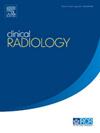Computed tomography (CT)-based classification and management pathways for hybrid lesions in children: a comparative analysis of congenital pulmonary airway malformation (CPAM) and bronchopulmonary sequestration (BPS)
IF 1.9
3区 医学
Q2 RADIOLOGY, NUCLEAR MEDICINE & MEDICAL IMAGING
引用次数: 0
Abstract
AIM
To establish a CT-based classification system for hybrid lesions in children, elucidate misdiagnosis mechanisms, and propose optimized clinical management pathways through comparative analysis with isolated CPAM and BPS.
MATERIALS AND Methods
This retrospective study analyzed 393 children with surgically confirmed congenital lesions (87 hybrids, 218 CPAMs, 88 BPS) from two centers (2010-2022). Hybrid lesions were classified preoperatively: Type A: cystic lesion + systemic arterial supply; Type B: solid lesion + systemic arterial supply; Type C: solid lesion - systemic arterial supply. Comparative analysis of clinical and imaging features was performed.
Results
Type A(51 cases, 58.6%): Predominantly Type 2 CPAMs (cyst diameter <2.85 cm, AUC = 0.963) with intralobar BPS (88.2%). Prenatal detection rate: 70.6% (36/51); symptomatic rate: 37.3% (19/51). Type B (33 cases, 37.9%): Solid lesions with extralobar BPS (78.8%). Prenatal detection rate: 84.8% (28/33); symptomatic rate: 24.2% (8/33). Type C (3 cases, 3.4%): 100% misdiagnosis due to absent systemic arterial supply. Hybrid lesions demonstrated significantly higher prenatal detection rates than isolated CPAMs and BPS (75.9% vs. 51.4% vs. 56.8%, P<0.001) but lower symptomatic rates (31.0% vs. 62.4% vs. 48.9%, P<0.001). Radiologically, hybrid lesions predominantly involved the left lower lobe (66.7% vs. 28.0% in CPAMs, P<0.001).
Conclusions
CT demonstrated 54.1% diagnostic accuracy for hybrid lesions. The proposed A/B/C classification clarifies misdiagnosis mechanisms, with left lower lobe predominance (66.7%) and systemic arterial supply (95.4%) as hallmark features. Microcystic Type 2 CPAMs (<2.85 cm) and extralobar BPS anatomical isolation synergistically reduce complication risks, providing an imaging-guided framework for risk-stratified management.
基于CT的儿童混合型病变分类及处理途径:先天性肺气道畸形(CPAM)与支气管肺隔离(BPS)的比较分析
目的通过与孤立性CPAM和BPS的对比分析,建立基于ct的儿童混合型病变分类体系,阐明误诊机制,提出优化的临床管理途径。材料和方法本回顾性研究分析了来自两个中心(2010-2022)的393例手术证实的先天性病变儿童(87例混合型,218例cpam, 88例BPS)。术前混合型病变分为:A型:囊性病变+全身动脉供应;B型:实性病变+全身动脉供应;C型:实性病变-全身动脉供应。对比分析临床和影像学特征。结果A型51例(58.6%):以2型CPAMs(囊肿直径2.85 cm, AUC = 0.963)为主,伴有瓣内BPS (88.2%);产前检出率:70.6% (36/51);症状率:37.3%(19/51)。B型(33例,37.9%):实性病变伴颞叶外BPS(78.8%)。产前检出率:84.8% (28/33);症状率:24.2%(8/33)。C型(3例,3.4%):100%因全身动脉供应缺失而误诊。混合病变的产前检出率明显高于单独的CPAMs和BPS(75.9%比51.4%比56.8%,P<0.001),但症状率较低(31.0%比62.4%比48.9%,P<0.001)。影像学上,混合型病变主要累及左下叶(66.7% vs. 28.0%, P<0.001)。结论sct对混合型病变的诊断准确率为54.1%。提出的A/B/C分类明确了误诊机制,以左下叶优势(66.7%)和全身动脉供应(95.4%)为标志特征。微囊型2型CPAMs (<2.85 cm)和颞叶外BPS解剖隔离协同降低并发症风险,为风险分层管理提供了成像指导框架。
本文章由计算机程序翻译,如有差异,请以英文原文为准。
求助全文
约1分钟内获得全文
求助全文
来源期刊

Clinical radiology
医学-核医学
CiteScore
4.70
自引率
3.80%
发文量
528
审稿时长
76 days
期刊介绍:
Clinical Radiology is published by Elsevier on behalf of The Royal College of Radiologists. Clinical Radiology is an International Journal bringing you original research, editorials and review articles on all aspects of diagnostic imaging, including:
• Computed tomography
• Magnetic resonance imaging
• Ultrasonography
• Digital radiology
• Interventional radiology
• Radiography
• Nuclear medicine
Papers on radiological protection, quality assurance, audit in radiology and matters relating to radiological training and education are also included. In addition, each issue contains correspondence, book reviews and notices of forthcoming events.
 求助内容:
求助内容: 应助结果提醒方式:
应助结果提醒方式:


